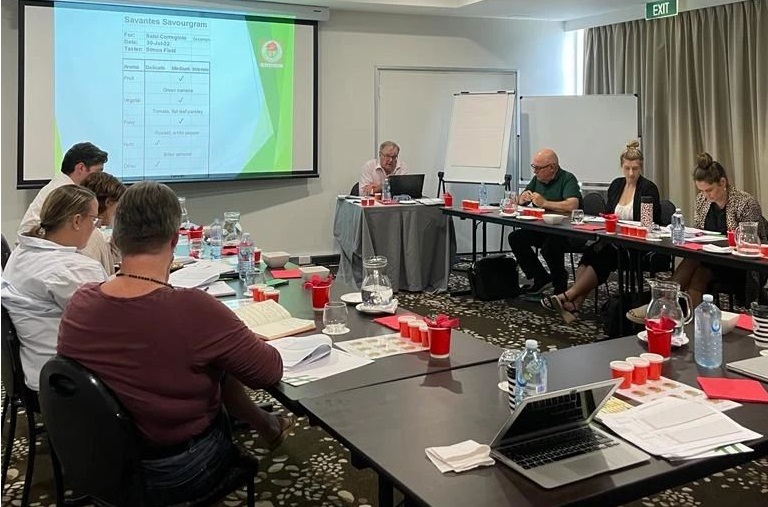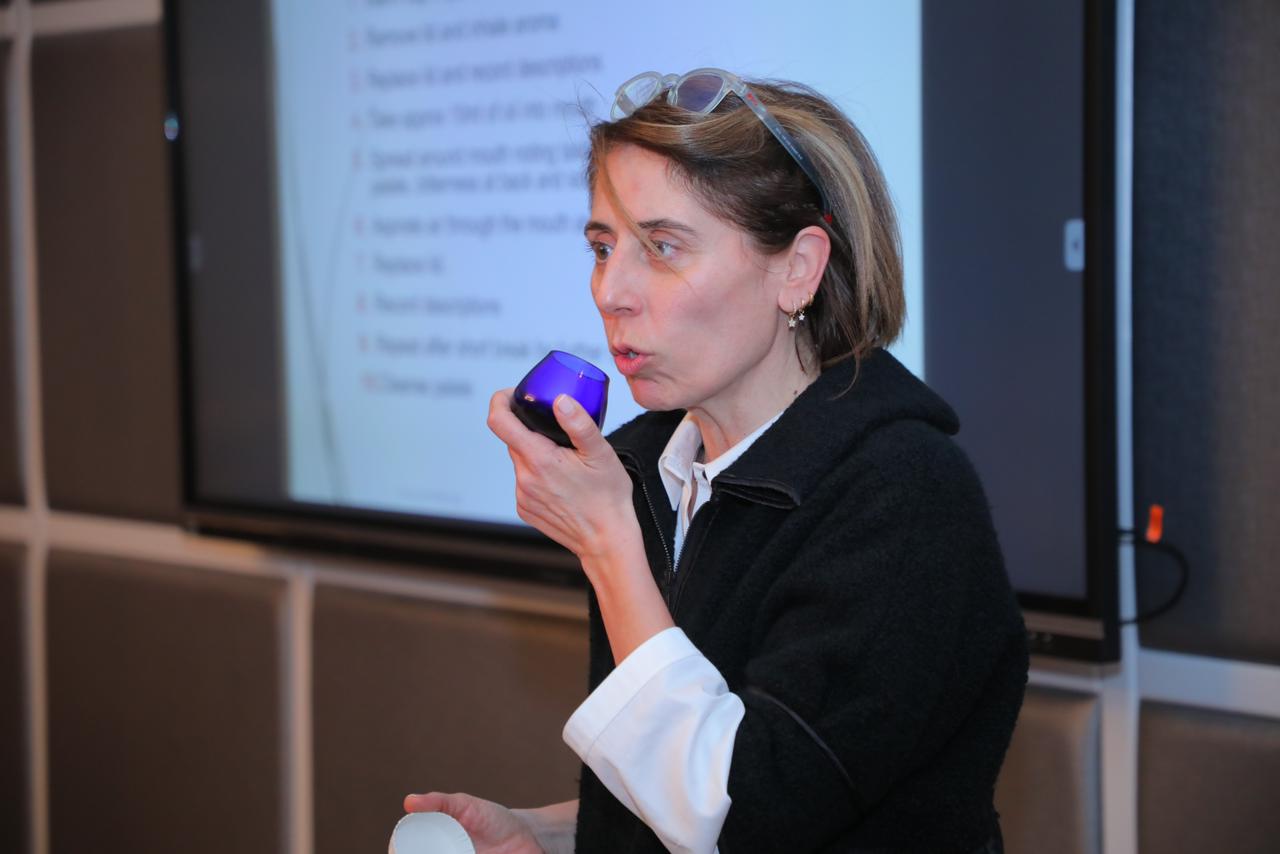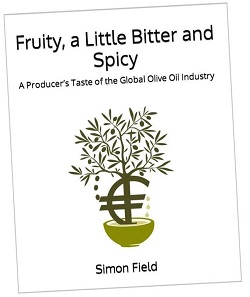Simon Field is the founder of International Extra Virgin Olive Oil Savantes and an olive producer and trader. He has a Masters degree from Cambridge University and is a former Executive Director of The Australian Institute of Agricultural Science and Editor of the journal Agricultural Science. He has also held senior elected positions in farmer organisations. His publications include handbooks on every aspect of olive production, processing and marketing.
Fruity, a Little Bitter and Spicy provides a practical Australian producer’s view of the establishment of an olive enterprise and entry into the global market. Moving from the early days of planting trees, the production of olive oil and involvement in international trade and events, the reader acquires an expansive knowledge of the global industry.
Nicole Puhar and Belinda Thewes have been awarded Associate Savante status after achieving the prescribed scores in the challenging Savantes Skills Test in Melbourne Australia.
Presented for the first time since March 2020, the Test involves a series of exercises covering variety identification, intensity ranking, defect detection and ranking, and triangle tests. Care is taken when setting the test that the degree of difficulty is consistent across the world and achieving Savante or Associate puts tasters at an equivalent level wherever the test is undertaken. Currently there 10 Savantes and 89 Associates worldwide.

Nicole Puhar is a Senior Brand Manager with Conga Foods in Melbourne. She specialises in Australian and Spanish olive oils and has a deep understanding of the market trends and consumer behaviour in this category. She is dedicated to encouraging consumers to use more of this healthy and delicious oil. Her knowledge of olive oils has allowed her to create engaging campaigns that showcase the versatility of this golden ingredient and its important role in bring people together.


Clearing out some dusty books I came across a 2011 publication sponsored by the European Union and Spain entitled ‘The surprisingly, marvellous, savoury, curious, healthy, historic, artistic and fantastic world of Olive Oil’. It is a beautiful informative book. The first significant pictorial of food comes on the 27th page. The preceding pages are full of production data, varietals, mythology, olive oil classifications and pictures of the olive groves of Spain stretching to the horizon.
The question is; does it sell olive oil to the consumer or is it a little self-indulgent, trying to satisfy those who paid for it first, the publisher, the producer organisations, the politicians and secondly persuade, incidentally, consumers? Is it trying to portray each of the facets described in the title? I am sure it has made money for the graphic artists, the designers, the authors and the administrators – I question the return to producers? My observation is that in the last 10 years since the publication of this book our narrative has not changed.

We hear endlessly of the Mediterranean diet pyramid in the context of olive oil sales. Analysis of Google Trends in the USA shows that a slight upward trend in searches on the Diet does not seem to lead to increased searches for olive oil.


